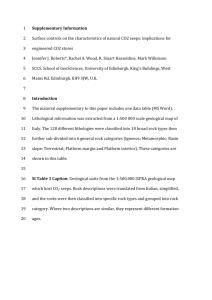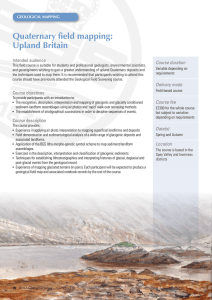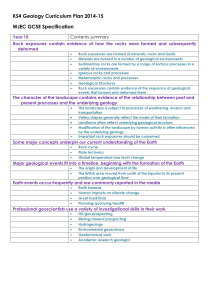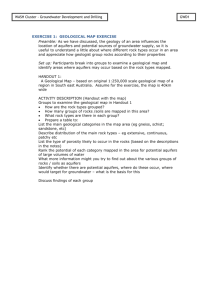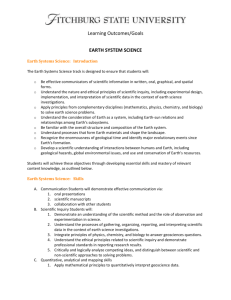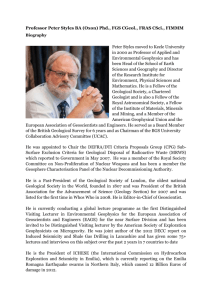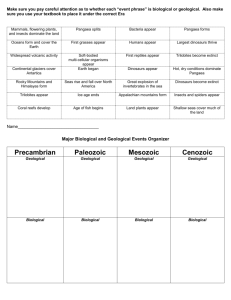Geological map interpretation
advertisement
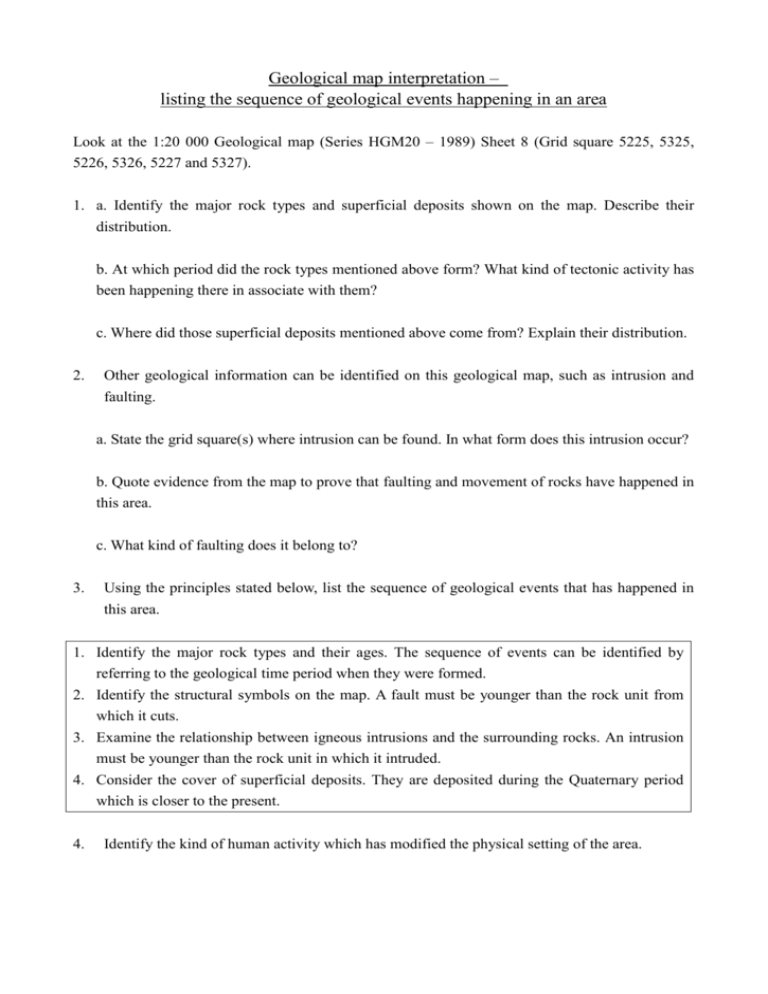
Geological map interpretation – listing the sequence of geological events happening in an area Look at the 1:20 000 Geological map (Series HGM20 – 1989) Sheet 8 (Grid square 5225, 5325, 5226, 5326, 5227 and 5327). 1. a. Identify the major rock types and superficial deposits shown on the map. Describe their distribution. b. At which period did the rock types mentioned above form? What kind of tectonic activity has been happening there in associate with them? c. Where did those superficial deposits mentioned above come from? Explain their distribution. 2. Other geological information can be identified on this geological map, such as intrusion and faulting. a. State the grid square(s) where intrusion can be found. In what form does this intrusion occur? b. Quote evidence from the map to prove that faulting and movement of rocks have happened in this area. c. What kind of faulting does it belong to? 3. Using the principles stated below, list the sequence of geological events that has happened in this area. 1. Identify the major rock types and their ages. The sequence of events can be identified by referring to the geological time period when they were formed. 2. Identify the structural symbols on the map. A fault must be younger than the rock unit from which it cuts. 3. Examine the relationship between igneous intrusions and the surrounding rocks. An intrusion must be younger than the rock unit in which it intruded. 4. Consider the cover of superficial deposits. They are deposited during the Quaternary period which is closer to the present. 4. Identify the kind of human activity which has modified the physical setting of the area.
